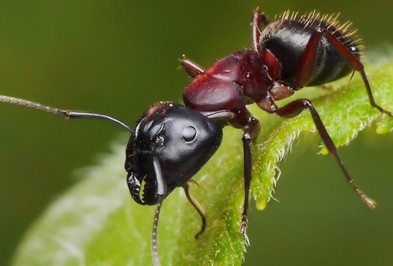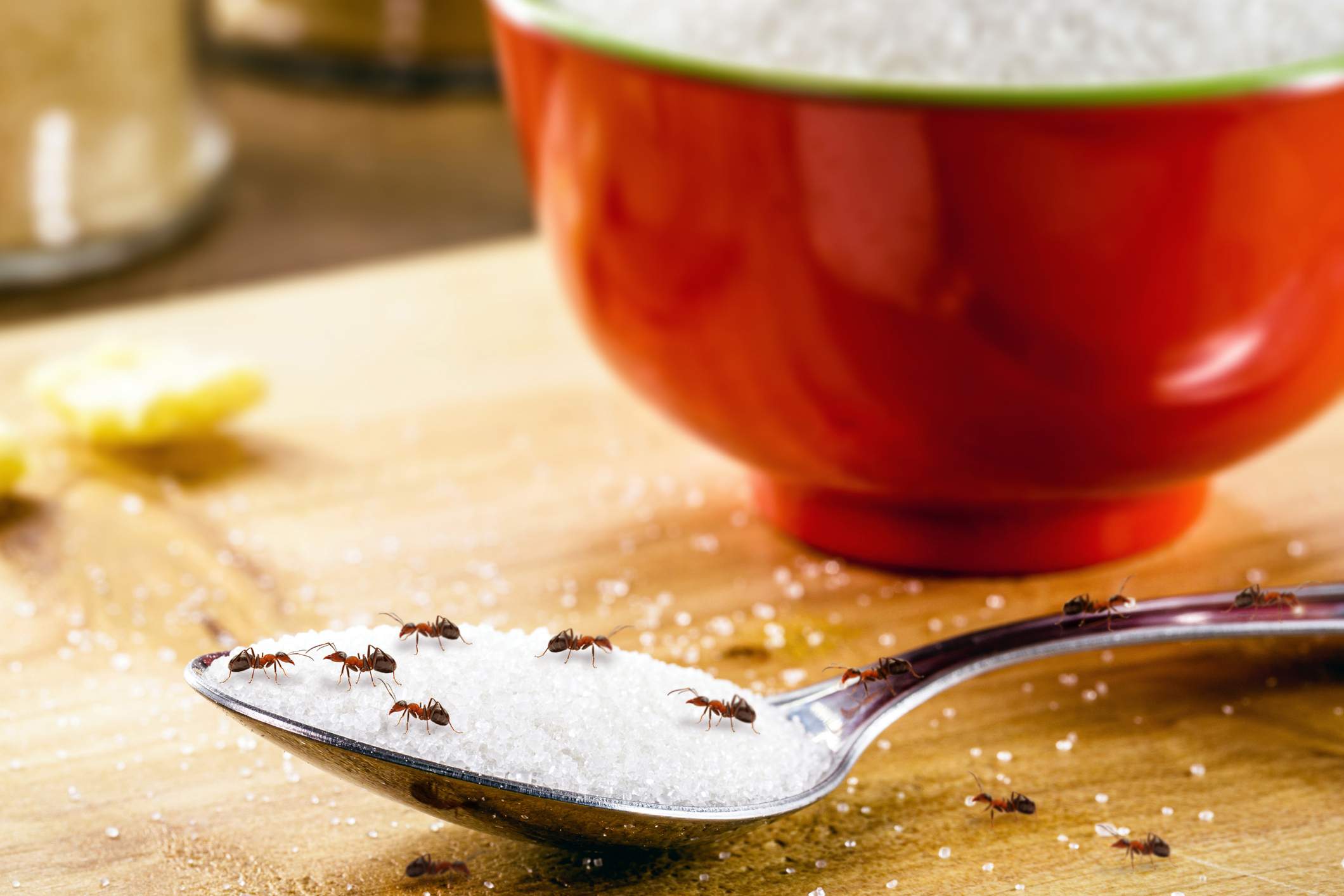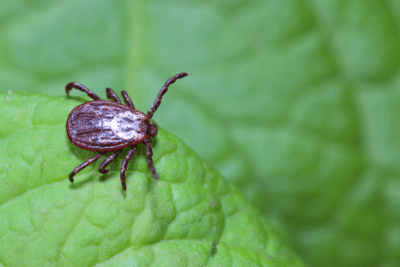Carpenter Antsdeveloper2022-12-16T14:50:53-05:00
Carpenter Ants
Carpenter Ants
Color: The common western species of carpenter ants are dull black in color with reddish legs and golden hairs covering their abdomens. Other species are black, a combination of red and black, or completely red or brown.
Characteristics: Carpenter ants don’t eat wood like termites. Instead they push the bits of sawdust called frass out of the tunnels they create.
Size: Worker carpenter ants vary in size, ranging from 1/8 of an inch to 1/2 an inch long. The queen carpenter ant can be up to 5/8 of an inch long.
Potentially Dangerous: To property, not people.
What is a carpenter ant?
Carpenter ants are social insects that use their strong mandibles to hollow out nests in wood surfaces. One of the signs of this particular type of ant is the piles of sawdust found near their nests, commonly referred to as frass. They are usually black, red, brown, or combinations of red and black. The workers in a carpenter ant colony vary in size from 1/8 to 1/2 inch in length and the queen can be as large as 5/8 of an inch in length.
Why do I have them?
Carpenter ants prefer to make their nests in decaying wood and then relocate to a more sound location. In most cases, a nest within your home is a satellite colony which has been started by a larger colony located outdoors. The ants you see indoors are foraging for food. Carpenter ants are able to enter your home in Madison, Eau Claire, and Milwaukee through eaves, window frames, door frames, utility lines and plumbing.
Are they dangerous?
Carpenter ants do not usually bite. The real concern with carpenter ants is their ability to cause structural damage to your home or business.
How do you get rid of carpenter ants?
Carpenter ants are extremely difficult to eradicate. Our treatment methods consist of the following:
- Preventive measures include barrier treatment, pruning of plants near buildings, caulking of gaps, and treating the lowest 3-6 ft. of tree trunks and utility poles.
- The parent colony must be located and destroyed by treating directly with an appropriate registered pesticide. This may require drilling into wood or wall voids.
Can I do it myself?
Due to the difficulty of treatment and the time required, carpenter ants are generally not a pest many people have success in eliminating. People should beware when purchasing pesticides and other products online as many are not effective. Pesticides can be harmful to people and pets if they are misused or mixed improperly.
How soon can you get here?
Our customers are our top priority. Your Wil-Kil technician is 100% committed to helping you as soon as possible.
Is the treatment safe?
Wil-Kil uses the least amount of material as possible while still resolving the problem. We utilize natural products, baits and mechanical means as a form of treatment whenever possible. When conventional materials are required, we follow very stringent guidelines for the use of the product so that it poses no threat to people, pets or plants. All products are registered by the EPA. Our service technicians will inform you of any specific safety measures that need to be taken.
How can I prevent this in the future?
Pest problems can be difficult to prevent. Many of our clients choose to continue service with our ant control services to keep pests out of their home. Contact us today to learn more.
Related Post From Our Blog
developer2023-05-10T10:28:23-05:00March 24th, 2023|0 Comments
If you’ve ever experienced a kitchen that couldn’t seem to shake off an ant infestation, you already know first-hand that it’s something you don’t want to go through a second time. Ants are a notoriously [...]
developer2023-05-05T14:19:04-05:00May 24th, 2022|0 Comments
The ants come marching as early as April. As the weather warms up, ants come back up to the surface from their burrows. You’ll commonly find these armies invading your kitchen—the last place you [...]
developer2020-11-11T15:13:39-05:00April 13th, 2017|0 Comments
Forecast calls for an extra buggy spring and summer! We all enjoyed the warm winter we had this year, but so did many insects. This year’s warm winter, from Eau Claire’s 60-degree record breaking temperature [...]






